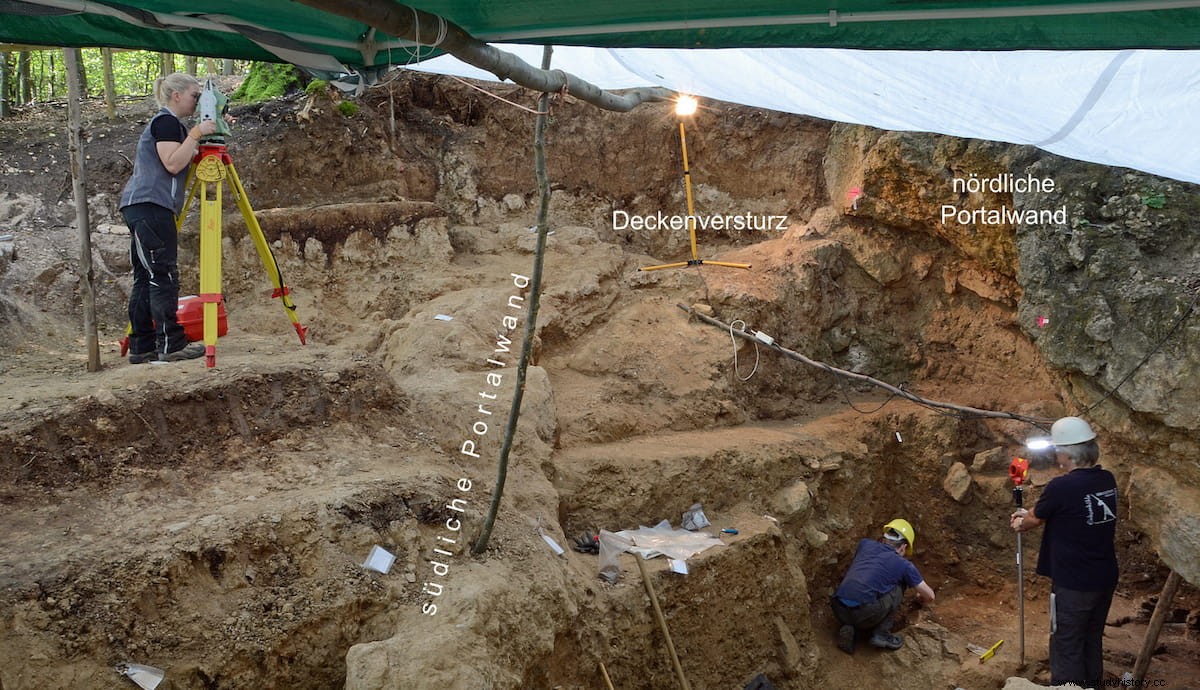Since the discovery of the first fossil remains in the 19th century, the image of the Neanderthal has been that of a primitive hominid. It has long been known that Neanderthals were able to make tools and weapons efficiently. But could they also make ornaments, jewelry, or even art?
A research team led by the University of Göttingen and the Lower Saxony State Heritage Office has analyzed a new find from the Unicorn Cave (Einhornhöhle) in the Harz Mountains.
The researchers conclude that, in fact, Neanderthals, genetically the closest relative to modern humans, had remarkable cognitive abilities. The results of the study have been published in Nature Ecology and Evolution .

In collaboration with the Unicornu Fossile society Scientists have been conducting new excavations at the Unicorn Cave in the Harz Mountains since 2019. For the first time, they managed to discover well-preserved layers of cultural artifacts from the Neanderthal period in the ruined entrance area of the cave.
Among the preserved remains of a hunt, an inconspicuous foot bone turned out to be a sensational discovery. After removing the soil adhering to the bone, an angular pattern of six notches was revealed. We quickly realized that these were not marks made by cutting the animal, but were clearly decorative , says Dr. Dirk Leder, director of the Lower Saxony State Heritage Office, which led the excavation. The carved notches could be analyzed with 3D microscopy at the Department of Wood Biology and Wood Products at the University of Göttingen.

To make a scientific comparison, the team carried out experiments with leg bones from modern cattle. They showed that the bone probably had to be boiled first in order to carve the pattern into the softened bone surface with stone tools, and the work would take about 1.5 hours.
The small, ancient foot bone discovered was identified as coming from a giant deer (Megaloceros giganteus ). It is probably no coincidence that the Neanderthal chose the bone of an impressive animal with huge antlers for its size , says Professor Antje Schwalb of the Technical University of Braunschweig, who is involved in the project.

The team at the Leibniz Laboratory at the University of Kiel dated the carved bone to more than 51,000 years using radiocarbon dating technology. It is the first time that an object that must have been carved by Neanderthals has been directly dated. Until now a few ornamental objects from the time of the last Neanderthals were known in France.
However, these finds, which are about 40,000 years old, are considered by many to be copies of pendants made by anatomically modern humans, since by this time they had already spread to parts of Europe. Decorative objects and small ivory sculptures have been preserved from cave sites of modern humans in the Swabian Alb in Baden-Württemberg that were found around the same time.
The fact that the new finding from the Unicorn Cave dates back so long ago shows that Neanderthals were already able to independently produce drawings on bones and probably also communicate using symbols thousands of years before the arrival from modern humans to Europe , says the project manager, Professor Thomas Terberger, from the Department of Prehistory and Ancient History at the University of Göttingen, and the Lower Saxony State Heritage Office. This means that Neanderthals' creative talents must have developed independently. The bone from the Unicorn Cave thus represents the oldest decorated object in Lower Saxony and one of the most important finds from the Neanderthal period in Central Europe .
